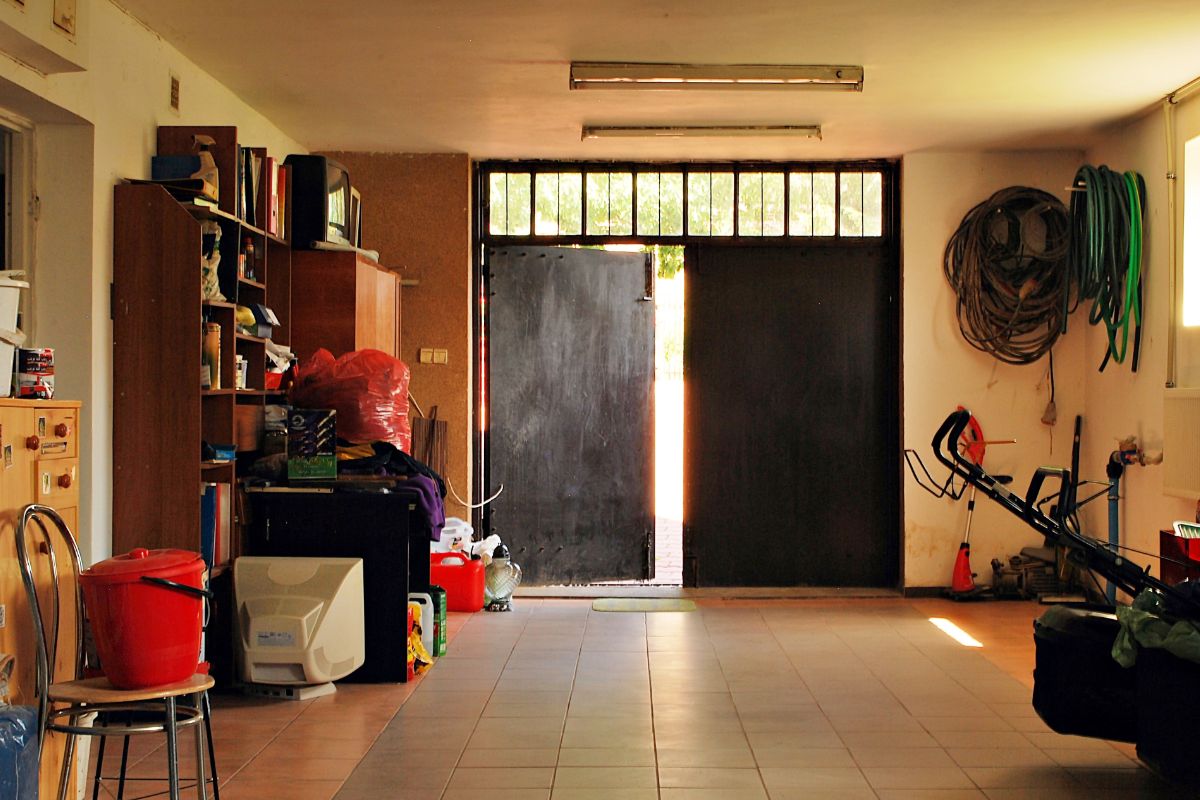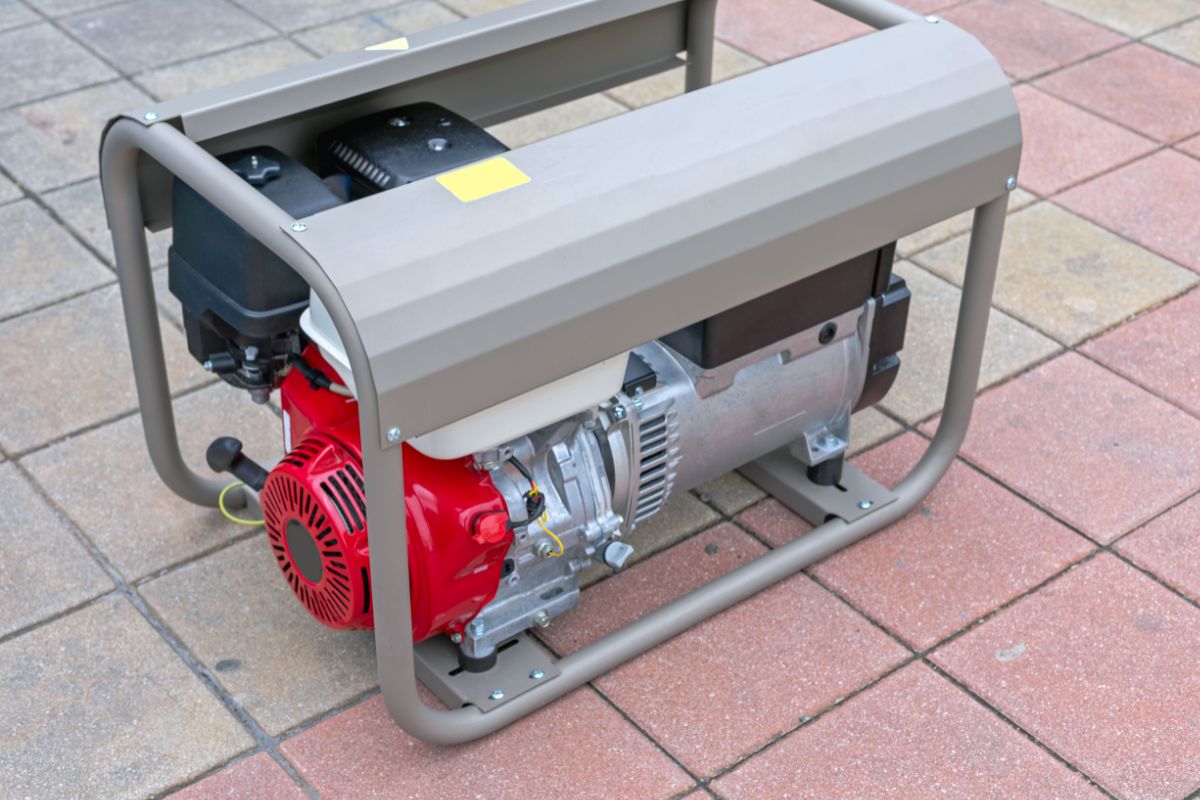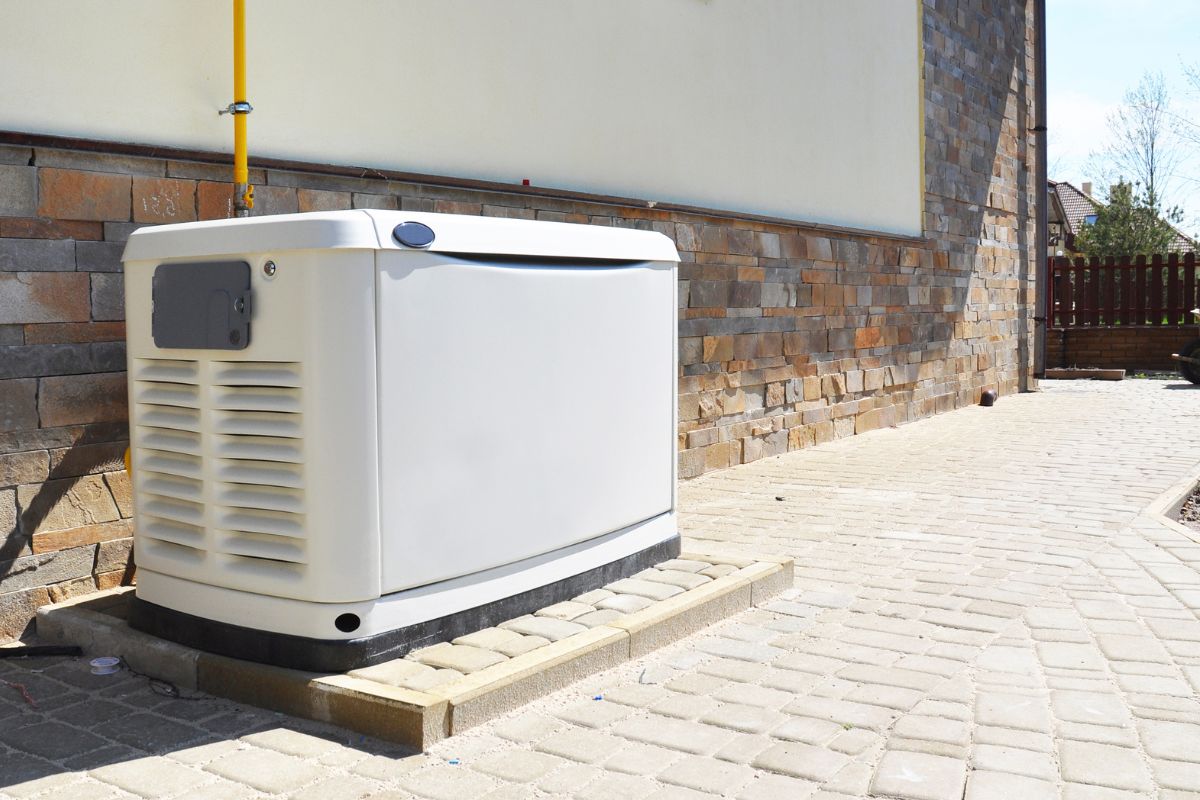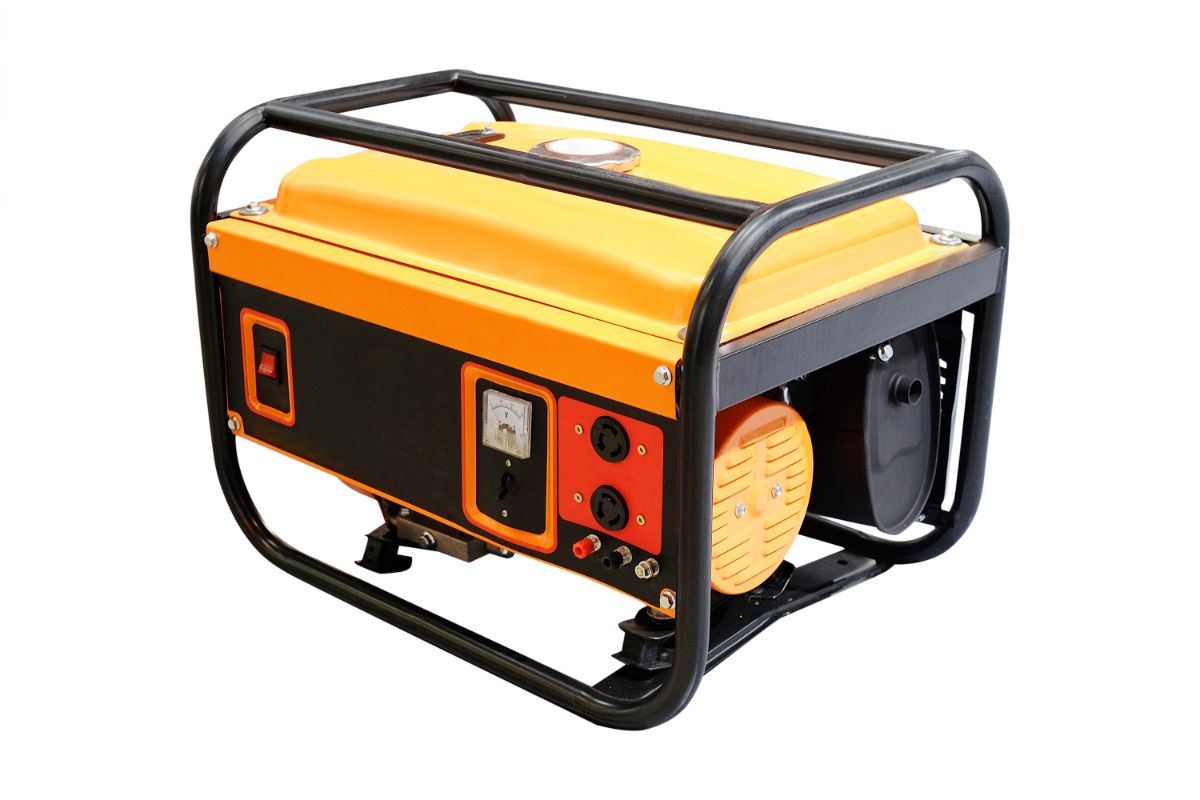Do You Have Secret Energy Hogs In Your Home?
Trying to reduce your power usage without an energy monitor is sort of the equivalent of trying to save money on your food shop in a store with no price tags…you just don’t know how much you’re spending, and on what.

Whether you’re an eco-warrior trying to save the planet by reducing your carbon footprint, a homeowner looking to save a few bucks on the energy bill, or perhaps a bit of both, you’ll need one of these nifty devices to help you keep your living space as efficient as possible.
The only problem you face now is finding the right home energy monitor for your needs — it’s a surprisingly large market.
Not to worry, though, fellow carbon cutters. After some serious research, I’ve wrangled the best of the best into this article for your viewing pleasure.
Best Home Energy Monitor — Reviews
In this instance, time is literally money, so let’s dive straight into some reviews, shall we?
Best Overall Home Energy Monitor — Sense Energy Monitor
The Sense energy monitor is so advanced, I wouldn’t be surprised if the technology was salvaged from the wreck of an alien spacecraft.
At its core, it’s a household energy monitor, meaning it tallies up your home’s total energy consumption, but utilizing appliance recognition AI, it’s also capable of learning about your individual appliances.
Using integrated Wi-Fi connectivity, you can hook the monitor up to the Sense app and label each individual appliance that it registers. Sense will also use the app to send you notifications about possible dangers and if any appliances have been left on when you’re out and about.
You can also set up custom notifications for more complex, power-hungry appliances, ensuring they run safely and efficiently.
Sense boasts real-time cost tracking that shows you the impact your energy-saving decisions have as soon as you make them, teaching the power of turning things off.
It’s a little pricey, but it’s objectively the best energy monitor on the market, and if you use it correctly, it’ll pay for itself in little over a year. After that, it’s all profit!
Pros
- Wi-Fi Connectivity — Accessed remotely via the Sense app.
- Hybrid Unit — Tells you both total energy and individual appliance usage.
- Real-Time Price Tracking — Accurate readings throughout the day.
- AI Learning — Learns your appliances automatically.
Cons
- Price — Pretty steep, but worth it in the long run.
Best Household Energy Monitor — Emporia Vue Smart Home Energy Monitor
If you’re only looking for accumulative household energy readings at this point in time, then I wholeheartedly endorse Vue, from Emporia.
Much like Sense, this monitor hooks up to your panel, intercepts energy usage information, and reports back to you via a user-friendly app on your phone or tablet. You can use it to monitor the energy efficiency of your home wherever you can get some bars.
You’ll enjoy the real-time reports of your energy use, and the handy notifications the app sends you to help reduce your bills, but the real beauty of this monitor is the expandability.
If you decide you want a more detailed rundown of energy usage in your home, you can invest in up to 16 sensors that allow you to monitor individual appliances as well as the sum total energy draw of your home.
Pros
- Expandable — Appliance sensors can be incorporated at a later date.
- Real-Time Price Tracking — Gives you a better insight into energy costs.
- Wi-Fi — Access energy reports remotely on your phone.
- Watt-$ Readings — No need to work costs out yourself.
Cons
- Price — Expandability ups the price.
Best Appliance Energy Monitor — P3 P4400 Kill A Watt Electricity Usage Monitor
The Kill A Watt will set you back a few more pennies than most individual appliance energy monitors, but what you get in return is amazing precision.
This little device can report the power usage of your appliances with up 99.8% accuracy, ensuring there are no little energy fees that fly by under the radar.
It also offers you readings across a broad range of time frames, including days, weeks, months, or even years, so you can see how your energy conservation efforts play out in the grand scheme of things.
The design is incredibly easy to use, as all the buttons are well labeled and the layout is on point. I also love the fact that you can dial in your energy provider’s rates, for super-accurate cost readings, meaning you don’t have to figure it out for yourself.
The LCD screen displays readings with clarity, although, at this price, I’d like to have seen a backlight, but, other than that, it’s a quality energy monitor.
Pros
- 99.98% Accuracy — Tells you almost exactly how much power is used.
- Variable Time Frames — You can choose between daily, weekly, monthly, or yearly readings.
- Intuitive Layout — Very easy to use.
- Custom Rates — Input your energy rates for super-accurate readings.
Cons
- LCD Display — Could do with a backlight.
Best Budget Option — Kuman KW47-US Electricity Usage Monitor
The KW47-US from Kuman is everything you could want in an affordable appliance energy monitor. Featuring 7 display modes, including one that automatically translates wattage into dollars, you know exactly what each individual appliance is costing you to run.
It also features overload protection in the form of both an on-screen alert and a noisy alarm. If you hear it, simply unplug the appliance to prevent potential electrical fires.
When plugged into an outlet, it runs on electricity, but as soon as it’s removed from the socket, the integrated, rechargeable battery kicks into gear, ensuring you don’t lose the data on screen, and speaking of screens…
Kuman treats us to a large LCD for easy readings. The absence of a backlight is a tad disappointing, but hey…at least it saves on energy, right?
My only real gripe here is that the manual is almost entirely useless, but, to be fair, the control layout is so intuitive, you can get by just fine on your own.
Pros
- Price — Very reasonable indeed.
- Real Cost Reports — No need to work out the kWh-to-$ equation.
- Battery Backup — Data remains on screen when unplugged.
- Overload Protection — May prevent electrical fires.
Cons
- Poor Instructions — You’re better off without them.
- No Backlight — LCD can be difficult to read in certain lights.
Best Multi-Appliance Energy Monitor — Emporia Smart Plug with Energy Monitoring
I have a real soft spot for these Emporia energy monitors — it’s just such a clever idea!
They’ve taken the smart plug blueprint and augmented it with energy monitoring technology, so not only can you turn your appliance on and off remotely, you can see how much power each of them consumes.
One of the most irritating things about appliance energy monitors is that you have to address each appliance individually, which can be time-consuming, and, well…boring.
The great thing about Emporia’s system is that you can purchase numerous plugs and monitor multiple appliances in different locations simultaneously.
This ingenious doubling up of smart plug and energy monitor functions makes Emporia’s creation the only option on the list that both monitors your energy and provides the means to reduce your power consumption.
Pros
- Multi Appliance Monitoring — No need to test appliances one by one.
- Savings Tracker — Informs you of savings made.
- Smart Plug Technology — Remote control helps you cut energy use.
- Price — A small investment for big savings.
Cons
- Wi-Fi Signal — Some find it a little inconsistent.
Best Home Energy Monitor — Buyer’s Guide
It may help your search to know how I chose my listed energy monitors, so, if you’ve got the time, feel free to glance through this buyer’s guide. I’ll cover all aspects I considered while curating my shortlist, as well as some general information that you may find interesting.
Household vs Appliance Energy Monitors
Choosing between a household and appliance home energy monitor is our first port of call on this green mission!
Household energy monitors link up directly to your energy meter and paint a full picture of your home’s entire energy usage. Appliance energy meters, on the other hand, monitor one appliance at a time, offering an intricate analysis of their power consumption.
Ideally, you’ll have one of each, or better yet, a hybrid model, which is why I included all three types of monitor on my list. That said, I understand that you may only need one or the other, which is why I’ve condensed the drawbacks and benefits of each device into these handy pros and cons lists.
Household Energy Monitors — Pros and Cons
Pros
- Household energy monitors give you the bottom line on your energy consumption.
- They’re incredibly easy and quick to use.
- Some advanced models feature appliance recognition technology, giving them 2-in-1 functionality.
Cons
- Appliance recognition technology can’t always discern between similar small appliances.
- The big energy picture they provide lacks detail, so it can be hard to figure out where the primary power drains are in your home.
- Household energy monitors tend to be more expensive than their focused counterparts.
- Installation can be dangerous.
Appliance Energy Monitors — Pros and Cons
Pros
- Appliance energy monitors let you know exactly where the problem areas in your house are in terms of energy consumption.
- They teach you more about the energy requirements of specific appliances.
- Generally speaking, they’re more affordable.
Cons
- It may take you a while to monitor all your appliances.
- You have to use math to drum up a more holistic picture of your energy usage.
- They’re not as durable as mains panel monitors.
Home Energy Meter Accuracy
Some home energy monitors aren’t as accurate as others. You can avoid the worst ones by increasing your budget, but you should also be looking for one that delivers readings in watts (actual power) rather than volt-amps (apparent power). Volt amp energy monitors aren’t quite as sensitive, so the readings will be slightly off the mark.
Better yet, why not treat yourself to an energy monitor that automatically translates the kWh readings into dollars, eliminating the need to work it out yourself — nice!
Real-Time Price Tracking
Real-time price tracking is one of the best features to look for in a home energy monitor. It helps us grasp the impact of our energy-based decisions and how much you can save by cutting down on the vampire draw of electronics on “standby”.
Not all monitors have this feature, but I’d highly recommend it. It offers a better understanding of your appliances and the electricity pricing system.
Connectivity (Wi-Fi vs Bluetooth)
Some home energy meters link up to a company app on your phone via Wi-Fi, offering you remote info of your home’s energy consumption.
These apps will keep you updated with notifications relating to improper appliance usage, and will perhaps even throw a few money-saving tips your way, so if you can afford a Wi-Fi monitor, it’s the best option.
Other energy monitors may only have Bluetooth connectivity, meaning they cannot link up to an app and cannot be checked remotely.
Certain up-market models might even offer both connectivity options, but I see this as something of an unnecessary frill.
Voltage Compatibility
Different households work with different voltages, so you’ll need to make sure any energy monitor you choose can shoulder the load.
Some monitors cover multiple bases, supporting voltage standards such as 120, 208, and 240V; however, many models are only suitable for use in single-phase, three-wire systems.
Solar Compatibility
If you’re really into reducing your carbon footprint, you may already have a solar panel array providing lean, green energy every day of the year. If this is the case, you’ll be interested in a model that can monitor the energy produced by your panels and how it’s utilized across your household.
Power
Home energy monitors require either batteries or electrical power. Batteries offer portability, whereas electrical power won’t run out of juice…the choice is yours.
Installation
Most manufacturers understand that you don’t want to have to call out the electrician to fit their energy meters, so they make the process as quick and pain-free as possible.
But with that being said, if you don’t feel comfortable meddling with your mains panel, it’s best to submit and call in a professional.
Warranty
My advice is to look for a home energy monitor that arrives with at least a 1-year warranty, just in case something goes wrong, and it breaks down on you.
Best Home Energy Monitor — Frequently Asked Questions
Before we part, let’s take a quick look at some home energy monitor FAQs.
What does a home energy monitor do?
Simply put, a home energy monitor tells you how much power your home or an individual appliance is burning through, enabling you to make informed decisions on how to make your living space more energy efficient.
How much could an energy monitor cut my power consumption?
How much money you stand to save by using an energy monitor all comes down to how you use it and how much you’re willing to compromise, but according to the Energy Saving Trust, it could be as much as 15% on your annual bills.
How can I monitor my whole house’s electricity?
What you’re after is a household energy monitor. They plug into your meter and tell you how much energy your entire house is using.
Are home energy monitors worth it?
As we’ve already discussed, home energy meters could potentially save you 15% on your energy bills. Being that the average American household will spend just shy of $1400 per on electricity per annum, you stand to save roughly $200 a year! That’s some serious walking around money.
Of course, you can try to make your home more energy-efficient without a monitor, but there’ll be a lot of guesswork involved, and all you’ll have to go on to make adjustments are your monthly energy receipts.
How accurate are home energy monitors?
The accuracy of home energy monitors differs from model to model, but the best offer readings with 99%+ precision.
What are the biggest power drains in my house?
Generally speaking, the biggest power drains in a home are the heating and cooling facilities, but there can be other sneaky power suckers operating under the radar, which is why, in my opinion, a home energy monitor is a must.
How do you tell what is using the most electricity?
To identify your greedy appliances, you’ll either need a household energy monitor with appliance recognition technology, or a run-of-the-mill appliance energy meter.
Best Home Energy Monitor – Final Thoughts
We’ve seen some awesome home energy monitors here today, each bringing something a little special to the energy-saving equation.
The more affordable, appliance-based units are a great start if you’re looking to “greenify” your property, but if you can stretch your budget, I highly recommend choosing something a little more expansive, such as Sense or the open-ended Vue.
I know they cost significantly more than, say, the Kuman KW47-US or P3 P4400 Kill A Watt, but with their advanced monitoring technology, you’ll make your money back (plus interest) in no time at all!








